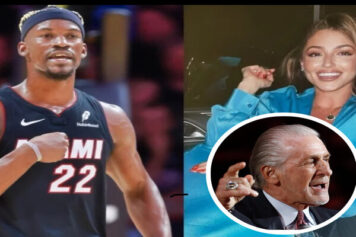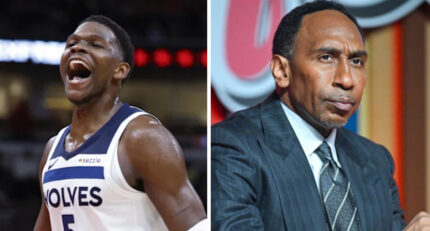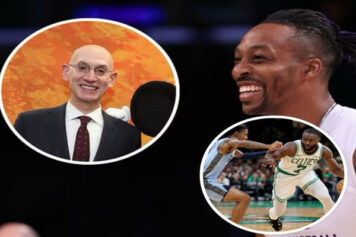"He got touched up a little bit last night. That happens a lot in basketball. It's just that now they treat everybody like they have white gloves and pink drawers and it's getting old. It's just the way the league is now."
–Monty Williams, head coach, New Orleans Hornets
Insensitivity is common in sports. In fact, it’s a kind of inverse characteristic of the sports world, a place where sensitivity is heightened on a literal level. All of the actions that take place in sports are affecting on a sensual level that directly impact the way that games are played, from player to coach to manager to owner. It’s all relative.
In the case of former NBA veteran and current New Orleans Hornets head coach Monty Williams, insensitivity seemed to be something that hit him upside his own head.
Star rookie Anthony Davis was concussed on a random play against the Utah Jazz on Nov. 2. Visibly shaken, Davis was removed from the game and given a week to recover before returning to the floor, but not before Williams opined on the situation.
As seen above, before the game following Davis’ sustained concussion, against the Chicago Bulls, Williams pontificated about what he perceived as softness regarding the NBA’s new policy regarding serious head injuries.
"When you're dealing with the brain, I guess what's happening in football has impacted everybody," Williams told reporters.
"It's a man's game. They're treating these guys like they're 5 years old," as Williams later explained that the recovering Davis desired to play. Williams soon began to backtrack on his statements, likely hearing the slight touch of idiocy of his thoughts
"We've got to protect the players, but I think the players should have more say so in how they feel. I'm sure I had four or five concussions when I played, and it didn't bother me. The NBA is doing what's necessary to protect the players, but this is not the NFL. You don't get hit in the head that much. I understand it. But as a coach, I'm a baby about it. I want my guys ready to play. That's basically the bottom line; I'm just a baby."
But au contraire, Mr. Williams.
Williams is not a baby, but a danger to the health care system of the players. Any time that a coach makes a statement that directly speaks to the alpha culture of sport, he’s speaking to the heart of players and to the outside value of how the sport and participants are perceived. Head coaches have the ability to mold how players are seen and viewed, and often, when it comes to injuries, players are expected to be ‘stronger’ than the affliction. A sprain? Play through it. A break? See how much pressure you can put on it. A headache? Scottie Pippen still hasn’t fully recovered from his.
A large part of this conversation is ignorance. Athletes get hit. That’s just the nature of American sports, and no one is denying that or saying anything to the contrary. But when you get hit in the head, somehow, the gatekeepers of Western sports (owners, general managers, coaches, even trainers) have seemingly been sent a mandate down from the gods on Mount Olympus that your head must be stronger than the blows withstood – and that’s just not the truth.
In a league where famed talk-box and New York Knick legend Charles Oakley complained that NBA players wearing more padded protection under game uniforms is “embarrassing”, it’s clear that the game is becoming more physically-threatening; or at the very least, basketball is perceived as becoming more physically-threatening to its players.
At the heart of the issue is the unspoken statement of standards, advocacy, and protection. The NBA is steadily getting more proactive about health standards for players, and with the rate of players being concussed during active play across the major American sports leagues, it makes great sense to issue a note, a literal note, of caution when matters of the brain are evolved.
Just imagine what could happen to the NBA if LeBron James were concussed, and afflicted so often that he couldn’t perform for a whole two seasons? What would that do to the league? What would it do to him and his career? Well, take a look at Sidney Crosby.
Hockey’s equivalent to the almighty “King James”, Crosby has come to be Wayne Gretzky’s heir apparent, the deliverer of good news to America’s ice land, the National Hockey League. Having literally won just about every conceivable award of high merit in his young seven-year career, the 25-year-old Crosby is already on pace to become a Hall of Famer in his respective sport, but for nearly two years, his entire career has been at a relative standstill.
Since January 2011, Crosby has been at the mercy of the debilitating effects of his frequent concussions, to the point where he is no longer insurable by prospective European teams during the NHL’s current lockout.
Said the Pittsburgh Penguins star to the Pittsburgh Post-Gazette about his plight, "It's not as easy as just going to play," he said. "If it was, I'd be playing in a lot more of those."
So serious is the injury that Crosby himself took to social media to express his concern over an athlete of another sport playing so soon after enduring his own trials with game-related concussions.
It calls back to the very seriousness of the concussion as a potentially devastating affliction.
The Centers for Disease Control and Prevention define a concussion as:
“A type of traumatic brain injury, or TBI, caused by a bump, blow, or jolt to the head that can change the way your brain normally works. Concussions can also occur from a blow to the body that causes the head to move rapidly back and forth. Even a ‘ding,’ ‘getting your bell rung,’ or what seems to be mild bump or blow to the head can be serious.”
The CDC states that proper diagnosis and treatment of concussions can prevent later injury or even death. In the case of several NFL players, death has not been from the brain itself instantaneously dying, but from the degeneration of the brain leading to severe depression.
That extreme stage of depression, found to be brought on by years of violent blows to the head, has contributed directly to suicide, most notably by the late Dave Duerson, who shot himself to death in the chest, so that his brain would be intact for examination.
Duerson and future NFL Hall of Famer Junior Seau, another casualty of multiple concussion-based suicidal depression, were not ‘soft’ players. They were individuals whose careers were based on their hardness and feats of strength – they were athletes who persevered in their sport, to the very ends of self-inflicted violence. It makes Williams’ own implications, of the preventative treatment of concussions as feminine, extremely dangerous to the culture of sport medicine in the NBA.
It’s one thing for someone who has a bad ticker — as Williams had as a star college player for Notre Dame — to be diagnosed and treated with a high level of care and respect while actively in pursuit of their professional goals; it’s another thing entirely when an ‘invisible’ injury occurs and garners little to no sympathy for the people afflicted. That kind of culture leads to a generation of professional athletes who begin to publicly suffer decayed standards of living, similarly to those in the NFL.
The invisible nature of the concussion is what had led the University of Michigan to classify it as “a ‘stealth injury’ because there is no specific test to diagnose a concussion; you cannot see a concussion on an MRI or X-ray; concussions vary by person and incident; and the signs and symptoms of a concussion can take minutes, hours or even days to appear.”
In other words, just because it’s unseen doesn’t mean it’s not there.
Hopefully the sentiments that Williams shared evaporate all around the NBA as well.



